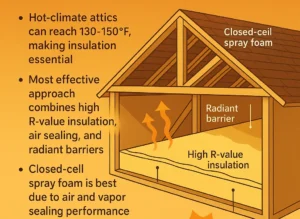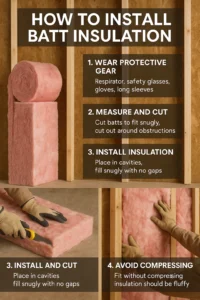Air ducts are an essential part of your home’s HVAC (heating, ventilation, and air conditioning) system. They transport heated or cooled air from your furnace or air conditioner to the rooms in your house. However, if your air ducts are leaking, your HVAC system may work inefficiently. This can lead to higher energy bills and reduced indoor comfort. Fortunately, there are several effective methods to seal air ducts and improve the overall efficiency of your HVAC system.
In this article, we will explore the best methods for duct sealing, including the benefits of duct sealing, duct sealing tape, and other efficient techniques.
BENEFITS OF DUCT SEALING
Before we dive into the methods for duct sealing, let’s first discuss the benefits of sealing your air ducts. By sealing your ductwork, you can improve the energy efficiency of your home by reducing the amount of heated or cooled air that is lost through leaks in your air ducts. This means that your HVAC system will work more efficiently, resulting in lower energy bills and increased indoor comfort. Sealing your air ducts can also improve the air quality in your home by reducing the amount of dust, pollen, and other pollutants that can enter your HVAC system through leaks in your ductwork.
DUCT SEALING METHODS
Now that we understand the benefits of duct sealing, let’s explore the most effective methods for sealing air ducts. There are several effective methods for sealing air ducts, including duct sealing tape, duct mastic, Aeroseal, duct insulation, blower door testing, and Aerobarrier. Choosing the right method will depend on the severity of the leaks in your ductwork, your budget, and your personal preferences.
Duct-Sealing Tape
Duct-sealing tape is a popular method for sealing air ducts. It is an easy and cost-effective solution that can be applied by homeowners themselves. However, not all duct sealing tapes are created equal, and it is essential to choose the right type of tape for your ductwork.
When choosing a duct sealing tape, look for one that is specifically designed for sealing air ducts and is UL 181-rated. UL 181 is a standard that tests the durability and adhesion of duct sealing tapes in HVAC applications. Using a tape that is not UL 181 rated may not provide a sufficient seal, which can lead to leaks and reduced efficiency.
When applying duct sealing tape, make sure to clean the area around the leak thoroughly. Remove any dirt, debris, or other contaminants that may prevent the tape from adhering properly. Then, apply the tape firmly over the leak, ensuring that it covers the entire area of the leak.
Duct Mastic
Duct mastic is a paste-like substance that is used to seal air ducts. It is a more permanent solution than duct sealing tape and is often used for larger leaks or gaps in your ductwork. Duct mastic can be applied with a brush or a putty knife and can provide an airtight seal that can last for years.
When using duct mastic, wear gloves and protective clothing as the substance can be messy and difficult to clean up. Also, apply the mastic to a clean and dry surface, as any contaminants can prevent the mastic from adhering properly.
Aeroseal
Aeroseal is a professional-grade duct sealing solution that is applied by trained technicians. It works by sealing leaks in your ductwork from the inside out. The technician will first block off all the vents in your home and then pump a sealant into your ductwork. The sealant will then circulate through your ducts, sealing any leaks it encounters.
Aeroseal is a highly effective method for sealing air ducts and can reduce duct leaks by up to 90%. However, it is also the most expensive method and can only be applied by a professional technician.
Duct Insulation
Duct insulation is another effective method for improving the efficiency of your HVAC system by reducing the amount of heat transfer that occurs within your ductwork. Insulating your ducts can also reduce the amount of noise that is transmitted through your ductwork.
When insulating your ducts, it is important to choose the right type of insulation material. The most common types of insulation materials used for ductwork are fiberglass and foam board. Fiberglass insulation is the most cost-effective option but can be messy and difficult to install. Foam board insulation is more expensive but is easier to install and provides a higher level of insulation.
To insulate your ducts, start by measuring the length and diameter of your ducts to determine how much insulation material you will need. Then, wrap the insulation material around your ducts, making sure to overlap the edges to create a tight seal. Secure the insulation material with duct tape or other adhesive material.
By insulating your ducts, you can improve the efficiency of your HVAC system and reduce your energy bills. However, it is important to make sure that your ducts are properly sealed before insulating them to ensure that you are not insulating any leaks or gaps in your ductwork.
Duct Sealing with a Blower Door Test
Another effective method for sealing air ducts is to use a blower door test. A blower door test is a diagnostic test that measures the air leakage in your home. It involves installing a powerful fan in an exterior door of your home, which pulls air out of your home, causing outside air to enter through any leaks or gaps.
During the test, a technician will use a smoke pencil or other tool to identify any leaks or gaps in your ductwork. Once the leaks are identified, the technician can use duct sealing tape, mastic, or other sealant material to seal the leaks.
Using a blower door test to seal your air ducts can be an effective method for identifying and sealing leaks that may be difficult to find through visual inspection. However, it is also a more involved and expensive method that requires the services of a professional technician.
Duct Sealing with Aerobarrier
Aerobarrier is a relatively new duct sealing technology that uses an aerosolized sealant to seal leaks in your ductwork. The sealant is sprayed into your ducts while a computer controls the pressure in your ductwork to ensure that the sealant is distributed evenly throughout your ducts.
Aerobarrier can reduce duct leaks by up to 95% and provide a more thorough seal than traditional methods such as duct sealing tape or mastic. However, it is also a more expensive method that requires the services of a professional technician.
PART OF A LARGER STRATEGY
While sealing your air ducts can improve the efficiency of your HVAC system, it is only one part of a larger strategy for improving the energy efficiency of your home. Other measures, such as upgrading your insulation, upgrading your HVAC system, and reducing air leakage through windows and doors, can also improve the energy efficiency of your home and reduce your energy bills.
In addition to improving the energy efficiency of your home, sealing your air ducts can also improve the indoor air quality of your home. By reducing the amount of dust, pollen, and other pollutants that can enter your HVAC system through leaks in your ductwork, you can create a healthier living environment for you and your family.
BENEFITS OF DUCT SEALING
Duct sealing can provide several benefits, including reducing energy costs, improving indoor air quality, and increasing the lifespan of your HVAC system. When your air ducts are sealed properly, you can reduce the amount of heated or cooled air that is lost due to leaks or gaps in your ductwork, which can help to lower your energy bills.
In addition, sealing your air ducts can help to improve the indoor air quality in your home. When your ducts are sealed, you can reduce the amount of dust, pollen, and other pollutants that can enter your HVAC system through leaks in your ductwork. This can help to create a healthier living environment for you and your family, especially for those who suffer from allergies or respiratory problems.
Furthermore, duct sealing can help to increase the lifespan of your HVAC system. When your air ducts are sealed, your HVAC system can operate more efficiently, which can reduce the wear and tear on your system and help to extend its lifespan.
As a final note, duct sealing is not a one-time fix. Over time, your ducts may develop new leaks or gaps due to natural wear and tear or other factors. Therefore, it is important to have your ducts inspected and sealed on a regular basis to maintain the efficiency of your HVAC system.
Call Pure Eco Inc. today at (877) 870-7998 and request your free Home Comfort Estimate!




